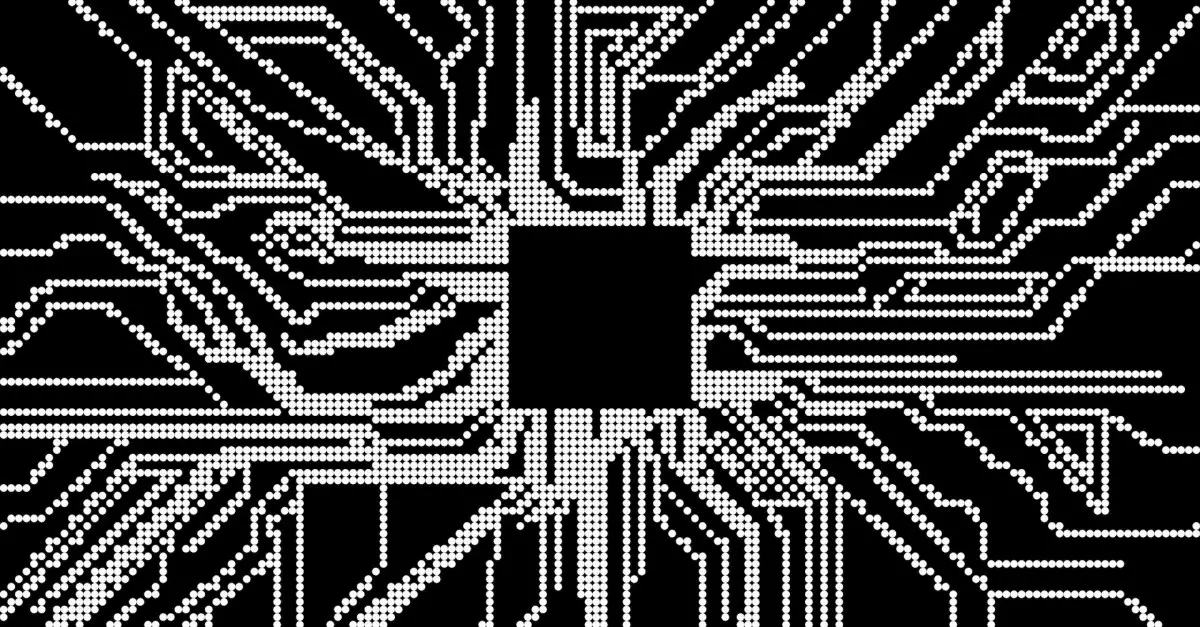In a bold marketing maneuver, OpenAI has made its entrance into the world of high-stakes advertising with a 60-second commercial during the Super Bowl. This move represents not just a pivotal marketing strategy, but also a reflection of the current state of artificial intelligence and its aspirations. Led by Chief Marketing Officer Kate Rouch, the advertisement positions AI as the latest in a long line of transformative human achievements, echoing historical milestones such as the creation of fire and the invention of the wheel. While the campaign incurred a hefty price tag of around $14 million, the intent behind it goes beyond mere brand promotion; it seeks to establish AI as integral to human progress in the minds of millions.
OpenAI’s advertisement employs an engaging animation style reminiscent of pointillism, effectively marrying creativity with technology. The choice to have human artists complete the final product, after using an AI prototype for initial brainstorming, highlights an important narrative: AI should complement human creativity rather than replace it. This decision resonates with Rouch’s assertion that the commercial celebrates human ingenuity, framing AI as an extension of our capabilities rather than a standalone entity. It’s a nuanced approach aimed at appealing to a general audience who may be intimidated or confused by discussions of advanced artificial intelligence concepts like AGI (Artificial General Intelligence).
Furthermore, this strategic choice to avoid jargon and focus on relatable applications—a business plan draft or language tutoring—is indicative of OpenAI’s intent to demystify AI technology. The company aims to engage with an audience largely unfamiliar with the intricacies of AI, thereby fostering a sense of accessibility and relevance.
Despite the triumphs of their campaign, the stakes for OpenAI are exceptionally high. As artificial intelligence continues to proliferate, competition among tech giants intensifies, with Google and Meta vying for a slice of the pie with their own advertising efforts. OpenAI is not just trying to stand out; it is aiming for a monumental valuation of $300 billion while projecting significant revenues. The pressures are compounded by past marketing missteps within the industry, such as Google’s ill-fated AI commercial during the Olympics, which faced backlash for a perceived lack of authenticity.
Rouch’s remarks highlight that, in the rapidly evolving landscape of AI marketing, lessons must be learned continually. Authenticity emerges as a paramount theme; the audience is discerning, and any misalignment between message and method can lead to skepticism. In this context, OpenAI’s emphasis on relatability and human partnership in AI technology could serve as a vital differentiator in the marketplace.
The debut of OpenAI’s advertisement occurs within a broader public discourse regarding the societal impacts of artificial intelligence. As the technology continues to penetrate various aspects of daily life, it prompts critical conversations about ethics, safety, and equity. By equating AI with foundational innovations like fire or the wheel, OpenAI is igniting a debate about technology’s transformative potential while simultaneously risking accusations of oversimplification. Rouch’s direct response to these potential criticisms reflects a confidence in the vision that AI is indeed a revolutionary tool, capable of facilitating monumental societal advancements.
Moreover, this moment highlights the cultural stakes surrounding AI—transformative technology must navigate both the optimism surrounding its potential and justified skepticism from an increasingly wary public. OpenAI’s portrayal of AI in this advertisement is a deliberate attempt to harness the positive aspects of the conversation while managing the fears that often accompany technological advancement.
OpenAI’s Super Bowl ad marks a significant chapter not just for the company, but for the tech industry at large. As it seeks to underscore the integration of AI into daily tasks, it must also engage critically with the ethical implications and societal responsibilities that accompany such claims. While the campaign is a commendable effort to position AI within the context of human advancement, it remains to be seen whether this moment will genuinely usher in a new era of technological relationship or if it will merely serve as a fleeting highlight in the complex journey of artificial intelligence in society. The answer lies in how well OpenAI navigates the tensions between innovation and authenticity, commitment and caution, in the coming years.

